Eight years after 9/11, federal agencies can't seem to agree on who is a terrorist and who is not. The failure has potentially serious implications, weakening efforts to use the criminal law to combat terrorism and at the same time undermining civil liberties. Evidence of this surprising lapse has emerged from extensive analyses by the Transactional Records Access Clearinghouse (TRAC) of many thousands of records obtained from the federal courts and from two agencies in the Justice Department.
Even for the government terrorism investigations that ultimately led to an actual prosecution for what often appeared to be serious crimes, TRAC found that the federal agencies differ markedly about who was labeled a terrorist and who was not. For example:
![]() During the last five-and-a-half years, one out of three (34%) of the
defendants who were charged in federal court for one or or more
specific terrorism offenses were not categorized as having any
connection to terrorism by the federal prosecutors.
During the last five-and-a-half years, one out of three (34%) of the
defendants who were charged in federal court for one or or more
specific terrorism offenses were not categorized as having any
connection to terrorism by the federal prosecutors.
![]() On the other hand, during the same period, one out of four (26%) of
the defendants on a list of terrorism matters prepared by the
National Security Division (NSD) — an office in the Justice
Department — were not classified as having anything to do with
terrorism by the prosecutors who actually brought the cases.
On the other hand, during the same period, one out of four (26%) of
the defendants on a list of terrorism matters prepared by the
National Security Division (NSD) — an office in the Justice
Department — were not classified as having anything to do with
terrorism by the prosecutors who actually brought the cases.
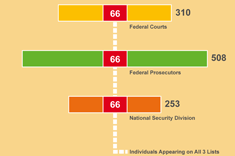
Figure 1. Persons Labeled as Terrorists. (click for larger image) |
![]() Furthermore, a comparison of all of the terrorism cases listed by three
separate and independent agencies — the courts, the prosecutors and the
NSD — found that there were only 4% of the defendants in common. Even
when the very extensive federal prosecutors' list is constrained to just
those connected with international terrorism or terrorist related
finance, there is still only an 8% overlap — just 66 defendants —
among the lists (see Figure 1).
Furthermore, a comparison of all of the terrorism cases listed by three
separate and independent agencies — the courts, the prosecutors and the
NSD — found that there were only 4% of the defendants in common. Even
when the very extensive federal prosecutors' list is constrained to just
those connected with international terrorism or terrorist related
finance, there is still only an 8% overlap — just 66 defendants —
among the lists (see Figure 1).
There are other indications supporting the surprising finding that the government is uncertain about who should be targeted for terrorism activities.
![]() During the last five years, assistant United States attorneys all
over the country declined to bring any charges against two out of
every three (67%) of the thousands of terrorism matters that the
investigative agencies had recommended for criminal prosecution.
During the last five years, assistant United States attorneys all
over the country declined to bring any charges against two out of
every three (67%) of the thousands of terrorism matters that the
investigative agencies had recommended for criminal prosecution.
![]() Equally disturbing, rather than seeing this very high turndown
rate diminish with time, the "declination" of terrorism referrals has
been moving in the opposite direction — from 31% in FY 2002 to 61%
in FY 2005 and to 73% in FY 2008 (see Figure 2).
Equally disturbing, rather than seeing this very high turndown
rate diminish with time, the "declination" of terrorism referrals has
been moving in the opposite direction — from 31% in FY 2002 to 61%
in FY 2005 and to 73% in FY 2008 (see Figure 2).
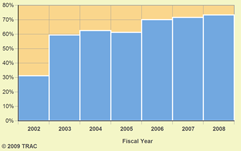
Figure 2. Terrorism Declination Rate. (click for larger image) |
The strong evidence that various parts of the government do not share a common understanding about terrorism has important consequences for all Americans. Those most immediately affected are the thousands of people whom the investigative agencies each year incorrectly recommend for prosecution in federal court. But to the extent that the investigators systematically waste their time targeting the wrong suspects, the chances increase that they will fail to identify the real terrorists who right now may be seeking to plant bombs, spread poisons or otherwise harm a much larger number of innocent people. Even harder to accurately measure are the subtle but nevertheless real consequences resulting from the wrongful operations of a massive computerized watch list now managed by the FBI.
| |
Strangely, while the treatment of the comparatively small number of terrorism detainees held in Guantanamo has for many months been the central focus of an intense political debate between President Obama, former Vice President Dick Cheney, members of Congress, civil liberties organizations and others, the subject of the government's poorly focused and often inept handling of the far larger number of individuals drawn into the traditional criminal process or improperly listed on the government's watch list has received comparatively little attention.
Here is the situation. Since becoming president in January, Mr. Obama has announced significant policy changes regarding Guantanamo, now holding under 230 detainees according to published accounts. Some of these proposed changes are still under consideration or are being challenged in Congress. He also has adopted rules forbidding torture. But as far as is known, neither the president nor Eric Holder, his attorney general, have described the adjustments, if any, they are considering in regard to the criminal enforcement strategies that were adopted by the Bush Administration in the fall of 2001.
(The vastly different size of these two populations is dramatic. While there currently are only a few hundred detainees, Justice Department records indicate that from FY 2004 to 2008, federal investigators recommended the prosecution of 8,896 individuals whom they thought were in one way or another connected to terrorism. This count does not include the additional persons in federal courts and others classified as terrorists.)
TRAC's analysis of the many thousands of relevant processing records — in addition to raising questions of scale — indicates that before the government can improve federal terrorism enforcement tactics it must first adopt clearer rules spelling out who will be considered a terrorist. These rules must be readily understood by the investigators, the prosecutors, the courts and the intelligence agencies. Only when that critical question has been better resolved can the real challenges of dealing with terrorism in a more effective and fairer way be dealt with.
| |||||
Surprisingly, however, despite a few scattered signs of concern, the Justice Department seems in fact to be working in the other direction: to further confuse the murky terrorism enforcement framework that the Bush Administration put in place immediately after the 9/11 attacks. One bit of double-think evidence supporting this conclusion is a December 2008 manual directive to the U.S. Attorneys stating that federal terrorism cases "may have, but are not required to have, identifiable links to terrorist activity." The sweeping nature of this directive appears to authorize prosecutors to label almost any of the thousands of possible federal crimes a terrorism matter when they wish. A matter can be considered terrorism, if the "case...is brought to protect against vulnerabilities to, or restore the integrity of, public or non-public infrastructure that is critical to our national security. Such infrastructure may include systems or networks affecting national transportation, communication and information sharing, immigration and citizenship status and border protection, energy production and transmission, military installations and other government facilities, natural-resource management, and banking and financial security, among others."
TRAC's current report focuses on criminal terrorism enforcement practices from FY 2004 to date. Two earlier TRAC reports examined in depth periods before 2004. TRAC's December 2003 report compared terrorism criminal enforcement actions for the two years prior (FY 2000 — FY 2001) and after (FY 2002 — FY 2003) the September 11th attacks. TRAC's September 2006 report updated that report, tracking these same matters to ascertain the final outcome on each defendant referred for criminal prosecution.
Who are Major Players?
Because of the complex structure of the American system of government, scores of different organizations — situated in two branches of the federal government and three different departments within the executive branch — are necessarily involved in the enforcement of the criminal laws against suspected terrorists.
First there are all the investigative agencies like the FBI, the Secret Service, Immigration and Customs Enforcement (ICE), the Bureau of Alcohol, Tobacco, Firearms and Explosives, and the IRS that are charged with gathering the evidence. (They are situated within the Justice Department, the Treasury Department and the Department of Homeland Security.)
Then there are the semi-autonomous federal prosecutors, working under the Justice Department's Executive Office for United States Attorneys. Among other responsibilities they decide which cases will be brought to court and which will be discarded. Once those yea or nay decisions have been made by the prosecutors, the judges and magistrates and in a few cases the juries get their turn to consider the evidence regarding each case.
And finally, working since 2006 at a very different level, there is a small new Justice Department agency, the National Security Division (NSD). Its role is to coordinate the national security efforts of the various components within the Justice Department, the intelligence community and other federal agencies, particularly in regard to the overlap in criminal enforcement and electronic surveillance efforts.
Conflicting Lists Reveal Arbitrariness of "Terrorism" Label
Three independent federal record keepers maintain case-by-case information tracking the prosecution of serious terrorism cases.
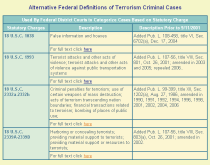
Table 1. Federal Terrorism Definitions. (click for more...) |
![]() Courts.
In some ways, the most direct classification process of the three organizations was developed by the Administrative Office of the United States Courts (AOUSC). Under the AOUSC system, cases are divided into different groups — bank robbery, postal theft, securities fraud, racketeering, alien smuggling, civil rights, hazardous waste handling, drug offenses, antitrust, etc. — according to the specific criminal charges that were filed against an individual. To be counted as a terrorism matter, the defendant must be charged with one or more of the fourteen statutes that the courts have determined were "terrorism" offenses. Examples include, under Title 18 of the United States Code, such laws as Section 2332a, the use of certain weapons of mass destruction and Section 2339A, providing material support or resources to terrorists. For links to the texts for these statutes see Table 1.
Courts.
In some ways, the most direct classification process of the three organizations was developed by the Administrative Office of the United States Courts (AOUSC). Under the AOUSC system, cases are divided into different groups — bank robbery, postal theft, securities fraud, racketeering, alien smuggling, civil rights, hazardous waste handling, drug offenses, antitrust, etc. — according to the specific criminal charges that were filed against an individual. To be counted as a terrorism matter, the defendant must be charged with one or more of the fourteen statutes that the courts have determined were "terrorism" offenses. Examples include, under Title 18 of the United States Code, such laws as Section 2332a, the use of certain weapons of mass destruction and Section 2339A, providing material support or resources to terrorists. For links to the texts for these statutes see Table 1.
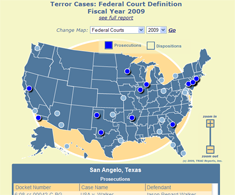
Figure 3. Terrorism Cases Federal Court Definition. (click for more) |
According to the definition of such crimes adopted by the courts, during the five and a half year period from FY 2004 to April 2009 there were a total of 310 individuals prosecuted for terrorism in the federal courts. TRAC has compiled information on each of these terrorism cases, including the name of each defendant, the city, the court docket number and filing date, along with a good deal of other information about each individual case. The data include the status of each case generally as of mid-July 2009 when TRAC's data collection work was completed, and includes the outcome of any charges that had been recorded in the court files as of that date. Click on the image at Figure 3 to access an interactive map which allows you to view cases by city and fiscal year (note: Adobe's Flash player browser plugin is required).
![]() National Security Division (NSD). The second key record keeper is the NSD. This small agency was established within the Justice Department after 9/11 to coordinate certain aspects of terrorism enforcement including the use of electronic surveillance. After long delays, the NSD recently provided TRAC with its list of individuals who — as noted above — the agency said made up "all cases and defendants" charged with counterterrorism, terrorism or terrorism related criminal cases "with an international nexus." The only redactions the agency said it made were for cases that remained under court seal and which, of course, would not be accessible in the court files either. The NSD list, which covers all of the post-9/11 period, claimed that a total of 253 such defendants were prosecuted during the same five and a half year period that we examined in the court files.
National Security Division (NSD). The second key record keeper is the NSD. This small agency was established within the Justice Department after 9/11 to coordinate certain aspects of terrorism enforcement including the use of electronic surveillance. After long delays, the NSD recently provided TRAC with its list of individuals who — as noted above — the agency said made up "all cases and defendants" charged with counterterrorism, terrorism or terrorism related criminal cases "with an international nexus." The only redactions the agency said it made were for cases that remained under court seal and which, of course, would not be accessible in the court files either. The NSD list, which covers all of the post-9/11 period, claimed that a total of 253 such defendants were prosecuted during the same five and a half year period that we examined in the court files.
Inexplicably, while the NSD provided the names of the individuals and the districts where they had been indicted, NSD officials insisted they did not record the court docket numbers for these court cases since they had "no need to know" them. Further, while acknowledging that the 1996 E-FOIA act required that the agency provide the list to us as a computer file, NSD also asserted that it only had the technical capability of making a print out on paper. Even this was of very poor quality so it was difficult to read. To view a pdf TRAC made of the entire paper listing received from the NSD click on the image at Figure 4.
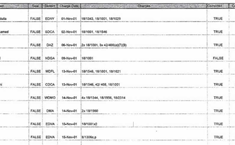
Figure 4. Terrorism Cases NSD Definition (click for more) |
An examination of the NSD list quickly shows that it is not restricted to individuals charged with a terrorism offense. Indeed, over four out of ten (43%) of the defendants whose names appear were not found in the court's files of those charged with terrorism offenses. Instead, a wide range of different types of charges appear on the NSD list — from defrauding the United States (18 USC 371), fraud or false statements (e.g., 18 USC 1001, 1029), to violations of common drug laws (21 USC 846) and immigration statutes (e.g., 8 USC 1324, 1325). The offense per se is thus not a distinguishing feature of cases on the NSD list. In many respects the nature of the charges brought against many of these individuals labeled as terrorists were indistinguishable from those brought against typical defendants charged in the federal courts since these same charges are among the most commonly filed.
The rest of the NSD list — some 153 individuals — did involve defendants charged with at least one terrorism offense. Often, not surprisingly, a terrorism charge was combined with a variety of common offenses. Thus, when a conviction occurred it was not necessarily for the terrorism offense.
While the NSD's list contained names not on the court's list, the court list also contained names not on the NSD's list. Indeed, the majority of the individuals charged with terrorism offenses — 157 out of the 310 (54%) — did not make their way onto the NSD list.
![]() Prosecutors. The third source for case-by-case information about criminal terrorism enforcement is the Executive Office for U.S. Attorneys (EOUSA). Like the NSD, EOUSA is an agency in the Justice Department. The source for these data are the records kept by each of the assistant U.S. attorneys in the 94 U.S. attorney offices around the United States and its territories. Under the EOUSA, going back to the mid-1970s, prosecutors have been required to record information about what eventually happened to every matter that an investigative agency such as the FBI, the IRS, the DHS, etc., recommended for prosecution. A long-standing aspect of the EOUSA system required the assistant U.S. attorney to determine the "program category" — white collar crime, civil rights, official corruption, etc. — for each matter. In the EOUSA's "terrorism" program there are many subcategories such as "international terrorism," "domestic terrorism," "terrorism-related hoaxes," and "terrorist financing."
The official description of each of EOUSA's terrorism program categories was given earlier in Table 1.
Prosecutors. The third source for case-by-case information about criminal terrorism enforcement is the Executive Office for U.S. Attorneys (EOUSA). Like the NSD, EOUSA is an agency in the Justice Department. The source for these data are the records kept by each of the assistant U.S. attorneys in the 94 U.S. attorney offices around the United States and its territories. Under the EOUSA, going back to the mid-1970s, prosecutors have been required to record information about what eventually happened to every matter that an investigative agency such as the FBI, the IRS, the DHS, etc., recommended for prosecution. A long-standing aspect of the EOUSA system required the assistant U.S. attorney to determine the "program category" — white collar crime, civil rights, official corruption, etc. — for each matter. In the EOUSA's "terrorism" program there are many subcategories such as "international terrorism," "domestic terrorism," "terrorism-related hoaxes," and "terrorist financing."
The official description of each of EOUSA's terrorism program categories was given earlier in Table 1.
A striking characteristic of the EOUSA's "terrorism" list is the diverse behaviors that are covered. They range from critical infrastructure protection to terrorism-related export enforcement, and from terrorism hoaxes to anti-terrorism environmental enforcement. And the EOUSA's "terrorism" definition continues to change. In addition to new subcategories added in 2002, two entirely new ones made their way onto the list in FY 2008 while seven were removed.
The practical consequence of the broad range of behaviors covered by EOUSA's terrorism category is that a much larger number of prosecutions were found on its list of terrorism cases covering the identical period of time, FY 2004 — FY 2009 (April). Indeed, the EOUSA list includes 3,010 prosecutions and is therefore almost 10 times the number (310) on the court's list, and nearly 12 times the number (253) on the NSD's list.
The 3,010 "terrorism" prosecutions identified under the EOUSA umbrella can be examined by clicking on the map shown in Figure 5. This link takes you to an interactive map where all of the details TRAC received about each case can be obtained by clicking the marker of interest (again, the Adobe Flash player is required). These data were obtained as a result of court litigation brought by TRAC under the Freedom of Information Act against the Department of Justice. One curiosity is that the Justice Department has for many years withheld from TRAC two key details about the court cases in its files even though that information is a matter of public record. The government contends that the release of the names of defendants and court docket numbers that already are available in court records and currently even accessible online would invade the personal privacy of these individuals. This issue remains under litigation (see http://trac.syr.edu/foia/eousa/20060913/ and http://trac.syr.edu/foia/eousa/20060913/opinion.pdf).
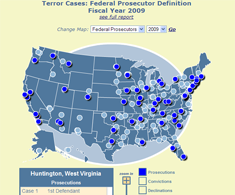
Figure 5. Terrorism Cases Federal Prosecutor Definition. (click for more) |
TRAC conducted a meticulous case-by-case match of the terrorism cases on the EOUSA list with those found in the court and NSD records. Our comparison was done in two stages. First we looked at the overlap between the different lists using the EOUSA's broadest definition of terrorism matters. Then we redid that analysis focusing only on the two EOUSA subcategories — international terrorism and terrorist financing — that most closely approximated the scope of coverage in the NSD's list.
The EOUSA's list of international terrorism and terrorist financing cases during this same period of time had 508 defendants. This was twice the number of cases found on the NSD's list (508 versus 253 defendants). However, when the two lists were compared only 118 of these 508 cases were actually present on the NSD's list. This meant that 390 or 77% of the cases EOUSA identified as international terrorism/terrorist financing prosecutions were NOT on the National Security Division's list.
Based on these results, one might assume that the NSD's list was more selective. However, TRAC found that 135 of the 253 NSD terrorism cases (53%) were not classified as international terrorism/terrorist-financing cases by the EOUSA. Furthermore, when the EOUSA's very broad definition of terrorism was used, 65 out of the 253 NSD cases — or one out of four — were not classified as having any connection to terrorism by these federal prosecutors.
Equally surprising was that 106 out of the 310 defendants who had been charged with terrorism offenses according to the federal courts, were not classified as terrorism cases by EOUSA even if you used EOUSA's all-encompassing definition of terrorism. It would appear that prosecutors sometimes chose to file a specific terrorism charge against an individual even in situations where that person does not appear to have any connection to terrorism. A possible explanation for this behavior is that it may be convenient to use one of these charges because the penalties specified in the law for terrorism situations are particularly heavy.
For all of these reasons there is surprisingly little consistency in the particular cases that show up as terrorism in the three systems, a finding that documents how poorly the government has defined who should be investigated and prosecuted as a terrorist. The full extent of this failure can be seen by the following: Even when we use the limited number of individuals on the EOUSA list of international terrorists and financial terrorists, an examination of all of the prosecutions listed in the three terrorism registers as mentioned earlier shows that only a very small number of all of these individuals — 66, or just 8% of them — appear on each of the three lists. See earlier Figure 1 and the supporting statistics summarizing these comparisons.
A Further Problem: An Absence of Effective Targeting
TRAC's analysis of the data we have obtained from multiple federal agencies shows another serious consequence directly related to the government's failure to adopt clear and understandable goals for its terrorism enforcement efforts: TRAC found that few of the cases end up with tangible results.
This part of our study focused on the results the government has achieved through its criminal investigation and prosecution of terrorism suspects. This research traced cases from when they were referred for criminal prosecution all the way to their ultimate disposition. Our focus here was on the referrals that in one way or another had been "disposed of" during the last five years (FY 2004 — FY 2008). With this approach, TRAC was able to assess the results — declinations, prosecutions, convictions, etc. — that the government says were achieved.
Two separate groups or cohorts of cases were identified and tracked — one based on the definition of terrorism matters developed by the federal prosecutors, the second applying the court's definition of terrorism. (Because the NSD does not release the criteria used for placing terrorism cases on its list and does not release any information about the matters in the pre-indictment stage, we were required to limit our comparison to cases in these first two groups.)
Using the federal prosecutors terrorism classification, a total of nearly nine thousand cases (8,896) were in one way or another "disposed of" during the last five years. For these matters focusing on suspected terrorists, assistant U.S. attorneys around the country declined to prosecute 5,995 or two out of three (67%) of them. Looked at from a different perspective, this means that during these years there were 5,995 alleged terrorism matters, that investigative agencies thought should be prosecuted, that in the end had consumed vast numbers of investigative hours, but which never got off the ground. See Figure 6 and accompanying summary statistics for cohort one. It should be acknowledged that the investigation of matters that ultimately do not result in prosecution or conviction aren't necessarily of zero value. For an unknown number of them, investigators say intelligence may be obtained that eventually will provide useful insights.
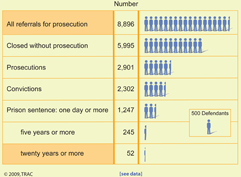
Figure 6. Terrorism Referrals Federal Prosecutor Definition. (click for larger image) |
There is no doubt that in the terrorism world solid evidence is hard to come by. That is a given. What is particularly disturbing, however, is that the government's own data show that the proportion of instances when the prosecutors found the work of the investigative agencies wanting has always been high and that this problem is growing. In fiscal year 2002, for example, slightly less than one third of the referrals from the agencies were declined. By fiscal year 2008, the data from cohort one show the annual turndown rate had increased to 73%. See earlier Figure 2 and accompanying table. (It should be noted that because many of the responsible investigators and prosecutors at least in theory operate under the direct supervision of the Attorney General that more effective coordination might be expected.)
Using the court's more restrictive definition of terrorism — based on the nature of the offense charged — a far smaller number of referrals (only 1,730) were identified during this same five year period. (Henceforth, for simplicity we will refer to this as "cohort two.") However, even for this much smaller universe, an even larger proportion of the total — about six out of every seven of them (86%) — were declined for prosecution. In concrete terms this means that 1,495 matters were rejected. See Figure 7 and accompanying summary statistics for cohort two.
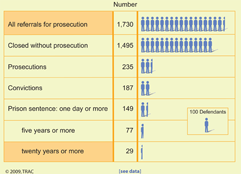
Figure 7. Terrorism Referrals U.S. Court Definition (click for larger image) |
Just as disturbing as the high probability of a "declination" are the specific reasons the assistant U.S. attorneys put forward to explain their negative decisions. The explanations they gave for the turndowns were surprisingly similar, regardless of which terrorism definition was involved and the different mix of cases that were examined. Five reasons headed the list for both cohorts. For example, using the data drawn from the federal prosecutors' definition of terrorism cases in cohort one as the base, in over half of their turndowns (53%) the assistant U.S. attorneys reported that the case brought to them by the investigators was based on "weak or insufficient admissible evidence" or that there was a "lack of criminal intent" or that "no federal offense [was] evident." These same three reasons accounted for 57 percent of turndowns in cohort two using the court's definition of terrorism cases.
"Agency request" and "office policy" were two even more puzzling reasons prosecutors cited among the top five reasons given for turning down a case. These two reasons accounted for 19 percent (cohort one) to 24 percent (cohort two) of the turndowns. The complete list of reasons cited by prosecutors for declining to prosecute a case along with the frequencies that each is mentioned are given in Table 2 (cohort one) and Table 3 (cohort two).
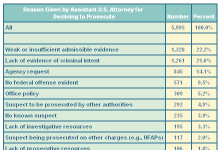
Table 2. Terrorism Declinations Federal Prosecutor Definition (click for details) |
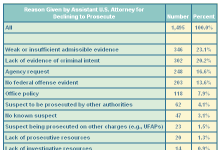
Table 3. Terrorism Declinations U.S. Court Definition (click for details) |
The above counts of cases, however, do not include defendants who eventually were found not guilty or had their prosecutions dismissed by the courts. With these additions, the proportion of matters that in one way or another did not result in a conviction of any kind climbs to three out of four (74%) of the total for the cases that the prosecutors labeled as terrorism (see summary statistics, cohort one) and almost nine out of ten (89%) of the cases involving a terrorism charge (see summary statistics, cohort two).
More evidence of the systematic cost of the government's failure to clearly define which terrorism matters it will investigate and prosecute emerges from an analysis of the sentences imposed on the very small proportion of individuals the investigative agencies targeted under the government's terrorism program who ultimately were sent to prison in cohort one. The key finding: for this group the typical or median sentence — half got more and half got less — was only 3 months.
| |
That is not to say, however, that the government is never successful when it comes to spotting truly serious cases and obtaining significant sentences. In cohort one federal judges sent only 1,247 individuals to prison out of the 2,302 who were convicted and who had been classified by the Justice Department as having some involvement in terrorism. Only 11% of those convicted were sentenced to five or more years, 2% to 20 or more years, 0.4% (9 cases) to life in prison and none were sentenced to death.
Yet another striking anomaly presents itself when the sentences imposed on the 2,302 individuals who the EOUSA said were involved in some kind of terrorism activities are compared with the sentences of the far smaller number of convicted individuals — 187 of them in cohort two — who were identified as terrorists under the rules of the court. The differences in the median sentences imposed on the two groups of defendants is stark, 41 months for those grouped under the court rules, 3 months for those identified by the EOUSA. This fourteen-fold difference further underlines the failure of the federal prosecutors to delineate whom it considers a terrorist. Compare summary statistics for cohort one and cohort two.
Little Official Concern
While there is little public evidence that the Obama Administration has launched a significant effort to deal with the continuing criminal enforcement flaws resulting from President Bush's sweepingly vague view of terrorism, the problem has not been completely ignored. Several months ago, for example, the Justice Department's Inspector General issued a report on the massive computerized list maintained by FBI to track possible law enforcement encounters with "known or suspected terrorists." The report said that as of last September the list had 400,000 names, 1.2 million when the aliases were included. The report also said that the information concerning 35% of the suspects was sourced to old or non-terrorists' investigations. The FBI's poorly managed terrorism "watch list," the report said, "could pose a risk to national security." In addition, the lapses it had documented could lead "to missed opportunities in gathering intelligence" and "place front-line law enforcement and screening personnel at increased risk."
The potential weakening of law enforcement effectiveness — in this case partially caused by the failure of government to define the problem at hand — also seemed to be at the heart of a 2006 observation by Judge Maryanne Trump Barry on the Third Federal Circuit Court of Appeals. Congress's vague wording of "terrorist activity," she said, was a concern because it "sweeps in not only the big guy, but also the little guy who poses no risk. " This same worry — as recently noted in a 2008 publication of the Executive Office for Immigration Review — was voiced by a former official in the United States Citizenship and Immigration Service. The absence of a "logical common-sense" rule about who is a terrorist and the current "very broad definition of terrorism," he said, may have led the immigration courts to wrongfully decide some of the cases they hear.
But witnesses in Congressional hearings, various legal groups and even some Justice Department officials have expressed a different concern: how the lack of a clear understanding of what constitutes terrorism has resulted in numerous civil liberties violations at the same time as it was undermining effective enforcement. The general concern is based on different kinds of evidence. Over the years, for example, there have been numerous well-documented accounts about instances when well known members of Congress (including Senator Edward Kennedy), licensed airline pilots, children under the age of five, army officers and other such individuals have been improperly denied access to their flights by a notoriously inaccurate "no fly" list launched by the Department of Homeland Security shortly after 9/11/01. (While the Inspector General's report discussed above said the government's imperfect watch list could weaken national security, the impact on incorrectly identified suspects on the list was not touched upon.)
Obviously such repeated mismatches are personally inconvenient. But at a deeper level they also challenge the basic "innocent until proven guilty" assumption of current law.
Government records contain little retrievable information about the 6,000 individuals in the last five years whom the government suspected of some kind of involvement in terrorism but then decided not to prosecute. This means that it is almost impossible to measure the real financial, social and political costs involved in the process. How many of the 6,000 lost their jobs because employers became worried about the questions the investigators were asking? How many of the 6,000 felt the need to hire lawyers to challenge the government's incorrect suspicions? How many of the 6,000 were at some point in the process actually detained and briefly held in government facilities before their cases were declined? Except for those rare situations when the individual suspect chooses to make his grievances pubic, these and other kinds of possible troubles never see the light of day.
Conclusion
It has been argued that the absence of a major terrorist attack on the United States since September of 2001 indicates that the enforcement policies put in place by the Bush Administration were effective. But the picture that emerges from TRAC's examination of extensive government records — agencies continuing to waste their time on investigations that go nowhere, prosecutions that ultimately result in minimal sentences — strongly suggests that this may not be the case. Whatever the ultimate judgment on the broader question, there can be little doubt that the unfocused, wandering and erratic federal effort, revealed by TRAC's careful review of hundreds of thousands of records, could be significantly improved. A key first step to significant change: the development of a clear and understandable definition of terrorism.
Special Notice: TRAC Seeks Retraction From DOJ

